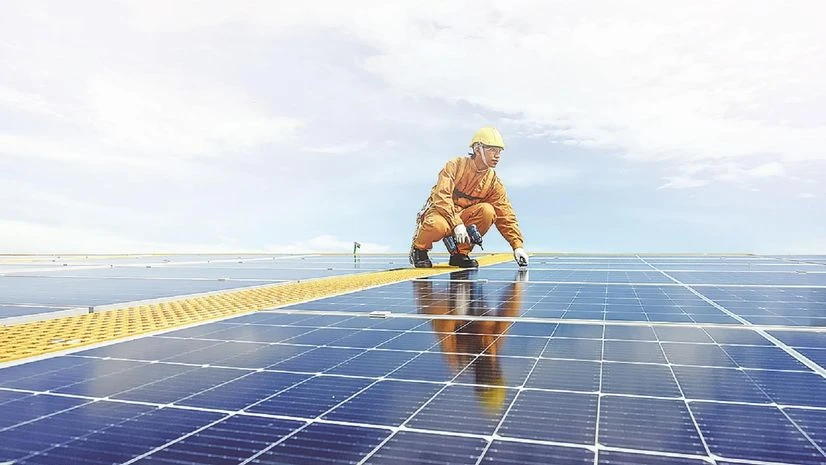
Key Takeaways
- Massive Capacity Expansion: The solar module manufacturing capacity in India is expected to reach 200 GW by 2027-28, four times the current annual domestic demand of 50 GW
- Cell Production Surge: Solar cell manufacturing capacity expected to grow from 27 GW to 100 GW, requiring capital investments exceeding ₹55,000 crore
- Export Opportunity: Significant surplus production capacity will position India as a major global solar equipment exporter, particularly to the US market
- Policy Impact: GST rate reductions could lower solar project costs by 4-5%, while new procurement mandates may increase tariffs by ₹0.30-0.40 per unit
- Industry Consolidation: Pure-play module manufacturers face pressure while integrated players benefit from operational efficiencies
India’s solar manufacturing sector is experiencing unprecedented growth, with domestic production capacity set to dramatically outstrip local demand within the next three years, according to comprehensive industry analysis from CareEdge Ratings. The country’s ambitious expansion in photovoltaic manufacturing positions it as a potential global supply chain leader in renewable energy equipment.
Exponential Growth in Manufacturing Infrastructure
The solar manufacturing landscape in India has undergone remarkable transformation, with module production capacity reaching 118 GW by July 2025, representing substantial progress from previous years. Current operational effectiveness stands at 80-85 GW for modules, with annual production estimated between 50-60 GWp. Solar cell manufacturing has achieved 27 GW in total capacity, though operational output remains at 11-13 GW, producing approximately 8-10 GWp annually.
This rapid infrastructure development has been catalyzed by multiple factors including accelerated solar installations across the country, comprehensive policy frameworks supporting domestic manufacturing, and enhanced access to capital markets and financing mechanisms. The sector’s growth trajectory reflects India’s strategic commitment to energy security and manufacturing self-reliance.
Strategic Shift Toward Vertical Integration and Export Markets
The projected expansion to 100 GWp in cell manufacturing capacity by fiscal year 2028 represents a fundamental shift in India’s solar supply chain strategy. This transformation, supported by capital expenditure commitments exceeding ₹55,000 crore, emphasizes backward integration throughout the manufacturing value chain.
As domestic cell production capacity approaches and potentially exceeds local requirements, module manufacturers are strategically pivoting toward export markets. This surplus capacity creates opportunities for Indian manufacturers to compete in international markets, particularly as global supply chains seek alternatives to traditional sourcing patterns.
Industry dynamics are expected to favor integrated manufacturing operations over pure-play module producers. Companies with comprehensive vertical integration across the manufacturing spectrum demonstrate greater resilience to margin pressures through operational cost efficiencies and supply chain control.
International Trade Dynamics and Market Opportunities
Export prospects for Indian solar manufacturers appear particularly promising in the United States market, despite evolving trade policies that could present challenges. The relatively underdeveloped US domestic solar supply chain, combined with ongoing strategic decoupling from Chinese manufacturing, creates significant opportunities for Indian producers.
Modules meeting US Domestic Content Requirement specifications command premium pricing, with margins approximately two to three times higher than domestic market rates. This substantial margin differential provides strong economic incentives for manufacturers to pursue DCR compliance and US market penetration.
Regulatory Environment and Cost Structure Implications
Recent adjustments to India’s Goods and Services Tax framework are expected to reduce overall project development costs by 4-5 percent. These reductions translate to lower landed costs of 1.0-1.2 cents per Watt for standard modules and 1.3-1.6 cents per Watt for DCR-compliant equipment. The GST modifications are projected to decrease solar tariffs by ₹0.06-0.10 per unit in the immediate term.
However, the implementation of mandatory domestic cell procurement requirements under the Approved List of Models and Manufacturers for solar cells (ALMM-II) framework is anticipated to increase tariffs by ₹0.30-0.40 per unit above current levels of ₹2.5 per unit. This increase reflects the existing price differential of 5-6 cents between DCR-compliant and standard modules.
The evolving regulatory landscape demonstrates the government’s commitment to supporting domestic manufacturing while balancing cost competitiveness and energy affordability objectives. Manufacturers must navigate these policy dynamics while optimizing their production strategies and market positioning.



